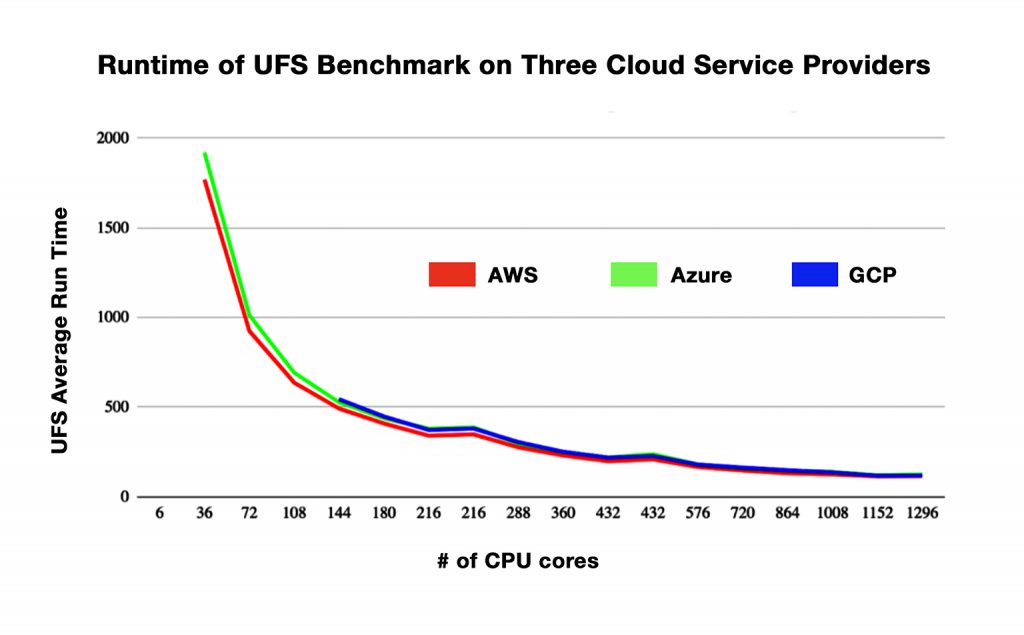The EPIC team has successfully run the UFS weather model on all 3 CSPs; Azure, GCP, and AWS and is now exploring ways to further optimize performance to ensure developers within the EPIC framework can efficiently and cost-effectively utilize the cloud infrastructure for research and development activities.
Cloud computing platforms have evolved drastically over recent years. Historically, running complex weather models such as the UFS required massive High-Performance Computing (HPC) systems in large data centers. That paradigm has shifted. Cloud computing platforms such as Azure, GCP, and AWS have evolved to the point that even the most complex global weather models can be supported with performance similar to large on-premise data centers.

The EPIC team has been evaluating the various cloud computing platforms to ensure that EPIC developers, maintainers, researchers, students and others can efficiently run these models, perform experiments, and test code contributions without having to invest in HPC hardware and HPC/IT specialists. Results have already shown that the 3 selected cloud platforms perform as expected and also offer very similar comparative performance for the UFS weather model!
Furthermore, the EPIC team is creating educational material based on these benchmarks of the UFS weather model on these cloud platforms. The material will give end users the information they need to make the right decisions about which cloud-computing configuration to use for a certain job to optimize performance and reduce cost. The benchmarks are ongoing and will begin focussing on even more complex coupled ocean/atmosphere models.








